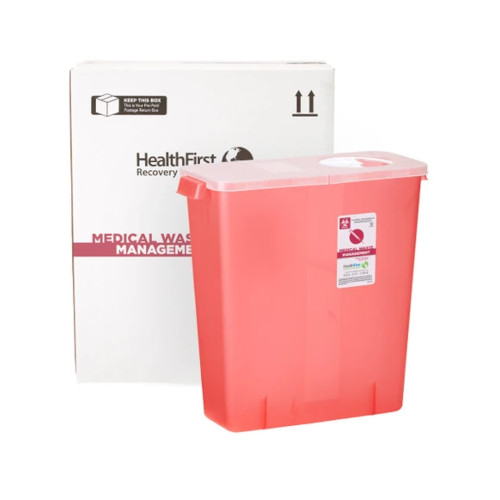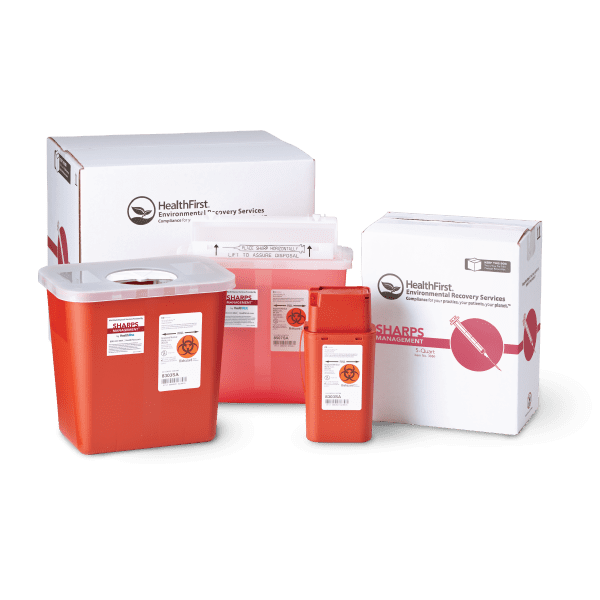Environmental Duty: The Eco-Friendly Technique to Medical Waste Disposal
Environmental Duty: The Eco-Friendly Technique to Medical Waste Disposal
Blog Article
Comprehending the Different Kinds Of Waste Disposal Strategies
In the realm of waste administration, the array of disposal techniques available today is substantial and differed, each technique serving a distinct purpose in attending to the difficulty of garbage disposal. click here. From reusing techniques that aim to offer brand-new life to products, to the intricate processes of dangerous waste administration, the landscape of garbage disposal is complicated yet important for environmental sustainability. Understanding the nuances of these various methods not only sheds light on the importance of accountable waste monitoring yet additionally motivates us to rethink our method towards waste disposal in a swiftly progressing world

Recycling Techniques
Recycling methods are critical for sustainable waste management practices in both domestic and commercial setups. medical waste removal near me. By carrying out effective recycling techniques, a considerable quantity of waste can be diverted from garbage dumps, conserving natural deposits and reducing the ecological impact of production processes
In houses, curbside recycling programs play a crucial duty in encouraging households to separate recyclable products from basic waste. Materials such as paper, plastics, glass, and metals can be sorted and accumulated for handling right into brand-new items, reducing the need for basic materials and energy-intensive manufacturing processes.
Industrial facilities additionally count on reusing techniques to reduce waste generation and promote a round economic situation. By executing closed-loop systems, services can recycle products within their production processes, minimizing prices and ecological footprint. medical waste removal service. Furthermore, industrial recycling programs usually entail collaborations with specialized recycling facilities to make sure that materials are correctly sorted, processed, and rehabilitated into the supply chain
Composting Methods

Oxygenated fixed heap composting includes mixing organic waste products in a huge pile and on a regular basis transforming it to make sure proper aeration. This method is well-suited for smaller-scale operations and households.
In-vessel composting includes placing organic waste in a shut container with regulated conditions for temperature and aeration. Windrow composting consists of creating long rows of natural waste and consistently turning them to promote disintegration - medical waste disposal.
Landfill Disposal
Land fill disposal is a commonly made use of technique for managing waste that can not be reused or composted. It includes burying waste in assigned locations of land, with proper preventative measures to avoid environmental contamination. Landfills are engineered centers designed to isolate waste from the surrounding setting. The waste is compacted and covered with soil daily to reduce smells, discourage pests, and minimize the spread of clutter. Modern garbage dumps are geared up with safety linings and keeping track of systems to stop leakage of dangerous materials right into the soil and groundwater. Methane gas, a result of decomposing natural waste in land fills, is commonly collected and utilized as a source of renewable resource. Regardless of improvements in landfill innovation, concerns remain about the long-lasting environmental impacts, such as groundwater contamination and greenhouse gas exhausts. Efforts to reduce dependence on garbage dumps include promoting waste decrease, reusing, and checking out different waste disposal approaches to minimize the ecological footprint associated with typical garbage dump disposal methods.

Waste-to-Energy Incineration
Incineration of waste for energy generation is a method progressively being considered as an alternative to traditional land fill disposal techniques. Waste-to-energy incineration involves the burning of waste materials at heats, normally in specialized centers developed to create power or heat via the process - click here. This method not only lowers the volume of waste that would or else be destined for garbage dumps however likewise uses the warmth produced during incineration to create energy
One of the essential advantages of waste-to-energy incineration is its capability to produce electricity while lessening the ecological effect contrasted to traditional garbage dump disposal techniques. By converting waste right into power, this approach assists in click here decreasing greenhouse gas emissions and reliance on fossil fuels for power generation. Furthermore, waste-to-energy centers are equipped with innovative air contamination control technologies to mitigate potential environmental pollutants released during the combustion procedure.
Contaminated Materials Monitoring

Thinking about the vital significance of responsible waste management techniques, specifically in the realm of environmental sustainability, the emphasis currently moves towards the detailed domain name of Hazardous Waste Management. Hazardous waste postures considerable dangers to both human health and wellness and the environment, necessitating specific handling and disposal strategies. Common examples of contaminated materials consist of chemicals, batteries, chemicals, and electronic waste.
Contaminated materials Administration involves the recognition, collection, transportation, treatment, and disposal of products deemed harmful or possibly harmful. This procedure requires adherence to rigorous policies and standards to reduce damaging effects on ecosystems and public wellness. Various techniques are employed in handling contaminated materials, including recycling, safe and secure garbage dumps, encapsulation, and chemical therapy.
Proper Contaminated Materials Management is vital for preventing contamination of dirt, water resources, and air pollution. It is necessary for industries, labs, medical care facilities, and other generators of contaminated materials to implement robust monitoring strategies, training programs, and emergency action intends to guarantee the risk-free handling and disposal of these products. Failing to manage contaminated materials properly can have far-ranging consequences, underscoring the significance of responsible and persistent methods in this area.
Verdict
In final thought, waste disposal methods play an essential role in handling and decreasing the influence of waste on the atmosphere. It is essential for industries and people to recognize the various waste disposal strategies offered and select the most proper method for lasting waste administration.
In the world of waste administration, the variety of disposal techniques offered today is large and varied, each technique serving a distinctive objective in attending to the obstacle of waste disposal. click here. From recycling methods that aim to give new life to materials, to the detailed processes of dangerous waste administration, the landscape of waste disposal is complicated yet important for environmental sustainability. Recognizing the subtleties of these different methods not just sheds light on the importance of liable waste administration however additionally prompts us to reconsider our approach in the direction of waste disposal in a quickly developing globe
Efforts to lower reliance on land fills consist of advertising waste decrease, recycling, and discovering alternative waste disposal approaches to decrease the environmental impact connected with traditional land fill disposal practices.
It is crucial for people and sectors to recognize the different waste disposal techniques offered and select the most suitable technique for lasting waste administration.
Report this page